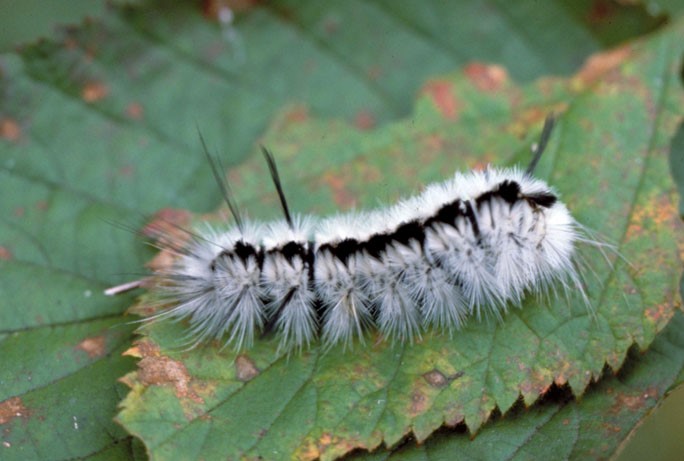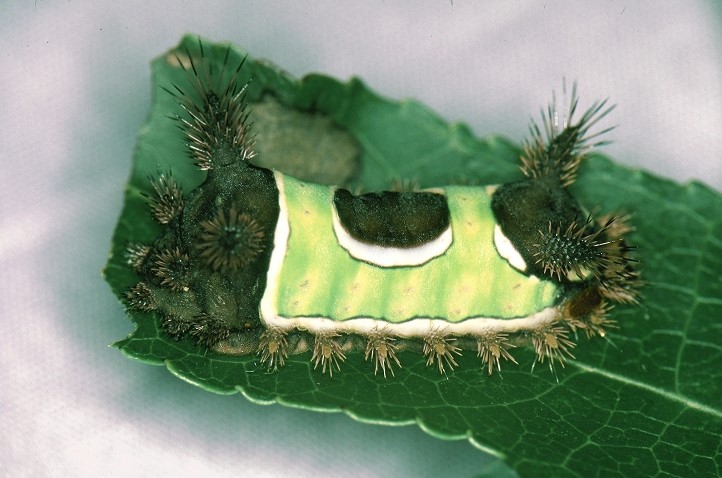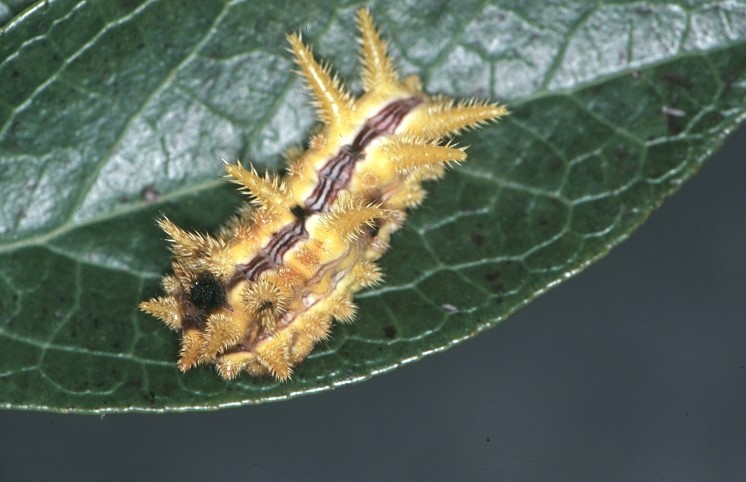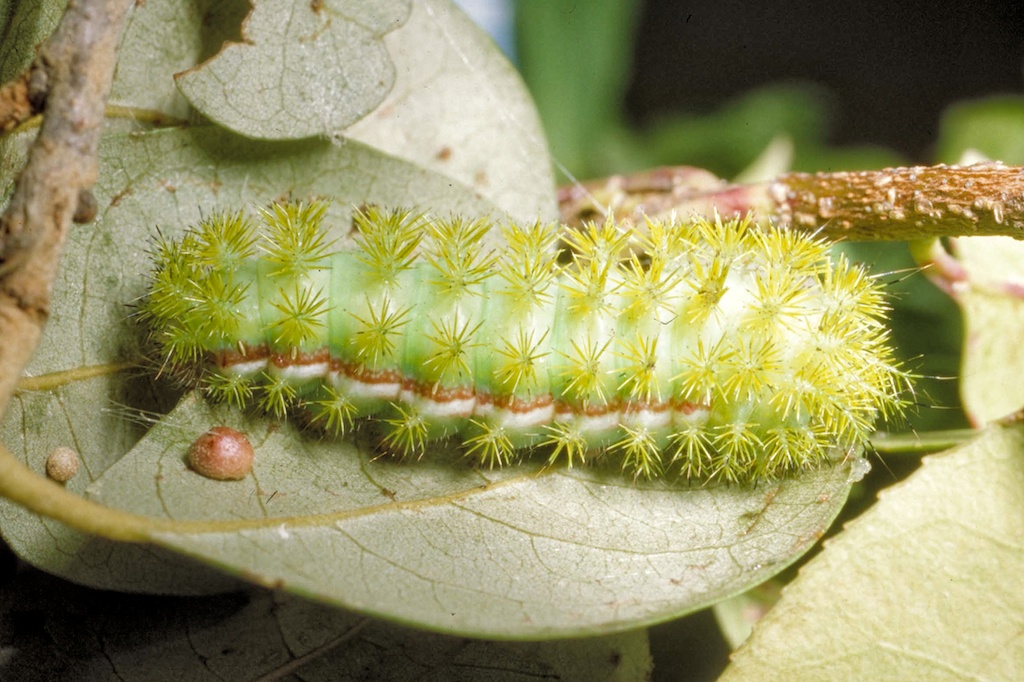- Scholarship Awards
- La Feria ISD is Set to Get Its Own Police Department
- All-Star Regionals
- LFECHS Non-Varsity Band Represents at State
- School Program Continues to Provide Fun Summer Activities
- Conservation Group Wildlife in Focus Expands Unique Photography Contest to Reach More Landowners, Photographers Statewide
- Local Birding Center Offers a Variety of Events
- Valley Native is Heading to the Olympics
- Hurricane Preparedness For Families
- Golf Tournament to be Held toHelp Cancer Patients
Start Looking Out For Stinging Caterpillar
- Updated: April 28, 2022
Texas A&M AgriLife experts warn contact can cause rash, painful reaction

Written by Susan Himes
As the weather warms up and people begin spending more time in their yards, parks and forests, more people will have the opportunity to encounter insects, some of which can bite or sting.
However, Texas A&M AgriLife Extension Service experts say before you blame a flying insect or a poisonous plant for a skin ailment, you may need to consider another culprit – “stinging” caterpillars.
“Spring foliage can bring on an abundance of caterpillars, a few of whom carry irritating or even venomous hairs that ‘sting’,” said Janet Hurley, AgriLife Extension statewide integrated pest management specialist for schools, Dallas.
“We have fact sheets available for schools this time of year, and we want to make sure parents are aware that there are stinging caterpillars in Texas, what they look like, and how to avoid them,” she said.
Stinging caterpillar species include the buck moth caterpillar, spiny oak slug caterpillar, hickory tussock moth caterpillar, saddleback caterpillar and io moth caterpillar.

Perhaps the most painful caterpillar in Texas is the southern flannel moth caterpillar, also known as the asp or puss caterpillar. An encounter with a puss caterpillar is very painful and may even require a trip to the hospital, according to AgriLife Extension experts.
What stinging caterpillars look like
Hurley said that just about every species of stinging caterpillar has now been spotted in Texas.
“A good rule of thumb is if a caterpillar looks ‘fuzzy’ — don’t touch it,” said Molly Keck, AgriLife Extension entomologist and integrated pest management specialist, Bexar County.

Although many fuzzy caterpillars are not dangerous, do not pick up a caterpillar unless you are sure it is not of the stinging variety. The puss caterpillar, for example, looks deceptively soft and can be especially tempting for children to want to pick up or “pet” them.
“These teardrop-shaped caterpillars look touchable, but they are not,” emphasized Wizzie Brown, AgriLife Extension specialist in integrated pest management for Travis County. “Asps have spines attached to venom glands that can lead to a nasty sting, rash and other issues.”
Caterpillar sting symptoms and treatment
“Since these caterpillars tend to hide, you may not even know you’ve encountered one until you feel the sting,” Hurley said.
If you are stung, you may feel immediate pain and reddish colored spots may appear where spines entered the skin. Some people may not feel pain until several minutes after they are stung, while others can experience intense throbbing or radiating pain. Other people may not feel much discomfort, and a red rash may be the only telltale sign.
Brown said people respond to caterpillar toxin differently.
“Some people may have a more severe reaction than others, and where on your body you are stung and the thickness of that skin can affect your reaction too,” she said.
If the caterpillar is still on you, immediately brush it off if possible, and then use tape to remove the spines that may still be in your skin, Brown said.
Washing the area with soap and water and applying an ice pack to the sting may offer some relief, and an oral antihistamine may help to relieve itching. Over-the-counter insect sting and bite relief products can also help. The pain often goes away within an hour.
Other symptoms after a sting can include nausea, vomiting, headaches, respiratory stress or shock. Since reactions to the toxins from stinging caterpillars can vary, seek medical advice or treatment immediately or go to an emergency room if you become concerned. Any contact with eyes or an allergic reaction to a sting warrants immediate medical attention.
Stinging caterpillar habitat
“You are more likely to encounter stinging caterpillars when they leave their host plant in search of a spot to pupate, ,” said Keck. “They aren’t aggressive and won’t come after you, but they can drop from trees.”
Keck said she hasn’t yet seen any caterpillars but that once we start having warmer days we may see more. She said this year’s drier weather may also play a role in their numbers.

“Insect populations are also often cyclical, and this may just be a year we don’t see them as prevalently,” Keck said.
Texans statewide should be on the alert and keep an eye on trees and shrubs for caterpillar development, which typically occurs now into the fall.
Some common tree hosts are apple, basswood, cherry, dogwood, elm, maple, plum and oak, which is a favorite of the buck moth caterpillar. Some stinging caterpillars may even be found on crops such as corn.
The AgriLife Extension experts explained that southern flannel moths, the adult stage of puss caterpillars, emerge in late spring or early summer to lay several hundred eggs on favored host trees. Caterpillars may also be seen feeding on dwarf yaupon and other shrubs. One to two generations occur each year, though puss caterpillars tend to be more common in the fall.
Pest management
Avoid stinging caterpillars by not sitting under trees and wearing long sleeves and pants outdoors, although even that is no guarantee of protection.
“I had the misfortune of getting an eastern buck moth caterpillar on my pants once and accidentally brought it inside,” said Keck. “When I rested my hand on my leg, I encountered the barbs, and it didn’t feel good. It itched and left an uncomfortable feeling on my thumb for a couple hours.”
Keck said there isn’t much you can do about managing these caterpillars until they all pupate and go away. You don’t need to worry about harm to your garden however, as stinging caterpillars typically do not do enough feeding to harm plants.
If you have large populations of stinging caterpillars and decide you need to try to manage them, you can try Bacillus thuringiensis var. kurstaki, Btk.
However, this will also kill all the non-stinging or “good” caterpillars, which are an important food source for songbirds. You may also look for a pesticide with active ingredients such as spinosad or azadirachtin, which are naturally derived products.

Puss moth caterpillars can also be controlled when they become abundant by spraying with a residual pesticide such as permethrin, cyfluthrin or similar sprays labeled for control of caterpillars on ornamental plants.
“We want Texans to know what these caterpillars look like and the importance of not touching them with bare hands,” said Hurley. “Looks can be deceiving and the best way to stay safe is to not handle anything you aren’t familiar with.”




